#USA environmental growth
Explore tagged Tumblr posts
Text
Trump's Second Term: Astrological Insights UP & Down
Astrological Predictions for the USA Under Donald Trump’s Second Leadership (2025-2029) As we step into a new phase of leadership, the astrological outlook for the United States under Donald Trump’s second term offers intriguing insights into various critical areas. From political relationships across the world to economic growth and environmental development, the stars reveal a complex but…
#astrological predictions USA#cultural renaissance USA#Donald Trump second term#global alliances USA#green energy USA#Mars missions USA#mob lynching USA#NASA achievements#natural hazards USA#political relationships USA#renewable energy USA#solar energy achievements#sustainable development USA.#USA 2025-2029#USA economic growth#USA environmental growth#USA happiness and well-being#USA national security#USA technology advancements#USA trade policies
0 notes
Text
Very easy task!!!
Help save mature forests in the US
#old growth forest#usa issues#nature#environmentalism#trees#climate change#take action#call to action
36K notes
·
View notes
Text
I know that many ancaps/libertarians are pro population growth and pro development, I however think that the global population and megacities are a government abomination. I keep thinking that places like the UK/Beltway/LA of USA are so fucked up because they don't have any real wilderness left. it's just a cultivated grid of human housing, industry, agriculture, the largest undomesticated creature being a racoon or fox or something pathetically small and unthreatening. Even the meme "birds aren't real" I think is a riff on this; you live in a 100% man-made environment, even the birds might as well be government spy robots.
When you fundamentally have to interact with an artificial rules based world all the time you have a tendency to systematize everything, and believe the lie that imaginary things like laws and governments are real physical things, and not just the whims of the police officer on the corner. Somewhat like abuse victims internalize the rules of their abuser to avoid punishment and cope. The urban landscape is the breeding ground of the cancerous and parasitic human survival strategy we identify as socialism/collectivism/progressivism.
The only real laws are those of nature, physics, chemistry, biology, evolution. Humans are an animal and we adapt to our environment, which is a mouse utopia. The modern world is so sick and against nature because our power to wall it out of our lives has created a hubris to rebel against these things. Progressivism in a sense, is rejection of natural order, a rejection of subjection to nature or nature's God. This is how you get to where we are today. I don't need to list the examples, but the unreality of thinking we can abolish scarcity, inequality, sex, the family, etc...
I don't want civilization and cities and humans not to exist. I just want radical concentrations of those things. We had 2.5% the global population in antiquity and still got innovative and talented thinkers that we still discuss today, artists, engineers, etc. These people had ample access to an untamed world, one that was unpredictable, and challenged them.
The urban human is a domesticated one. They have no real self-determination. Without a world unmade by humans, they have no reference for something beyond the imagination of another human, no blank canvas to make their own. Like the shadows of Plato's cave I'd wager it's like a person forced to look into a mirror their entire life. They would have no ability to identify themselves in the mirror as they have no reference that the mirror isn't just the entire world.
Climbing mountains, navigating rapids, scaling rock walls, skiing couloirs... the physical conquest of nature yields a surprise that cannot be claimed from an artificial challenge.
Think of the sweating, yelling, heaving mass of Cairo,

Bangladesh

Lagos

Mexico city

You might just assume they make great films, music, art, thinkers, engineers, and we just don't hear about them because they don't get distributed here or something. No it's just a mass of human flesh consuming the natural world, no ability to reflect and create, just consume.
Almost all of these places import food from the temperate climates of developed nations. A two year breakdown of global supply chains would result in them starving in the millions.
Even here in western civilization we yield the prime 'high-density walkable" real-estate to degenerates via council and section 8 housing.
Government programs of fiat currency, the welfare-warfare state, followed by deindustrialization has resulted in a massive mismatch in human population and economic/environmental capacity. Sure, here's where someone could politely chime in that "humans have infinite creative capacity, we just need to unlock their potential and your Malthusian doomsday is no more" and I grant that to a degree.
But massive declines in human population, the standard of living, and technology are regular historical occurrences. Western science has had an absolute "ick" towards actually understanding and implementing Darwinism towards human populations. Country-wide datasets of IQ probably remain stable due to the continuing rise/Flynn effect of the middle/upper class offsetting the sliding downward of the welfare class. There's no evolutionary biologist who wouldn't recognize that the market economy selects for intelligence and the welfare state was our feeble altruistic effort to carry the "but I did have breakfast" population along with us.
We've had nearly a century and, in some cases of repeated teen pregnancies, 6 or 7 generations who were never asked to provide for themselves meaningfully. They live in an ever more confusing world of late payments, cash advances, welfare office applications, prison stints, evictions, and unplanned pregnancies. Each generation more befuddled than the last. Recent studies show that there have been population bottlenecks through human evolution. In the bronze age as few as 1 in 17 men reproduced at all.
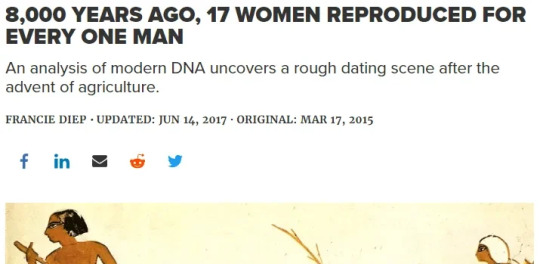
Biological imperatives of reproduction rule over all other sentiments and altruistic masochism. For the silent generation and the boomers, the welfare state was a token price they agreed to pay to keep the peace and they could afford it as they got race-rioted out of their downtown homes into the suburbs. Now the jig is up and millennials en-masse are finding that they can't afford to have kids *intentionally*. They look at their pay stub getting taxed at 40% so that, over at the section 8 housing, "baby mamas" collect government checks for the consequence of a hookup with serial felons, who are also housed and fed with working people's taxes. The boomers made a devil's bargain, they cucked their children!
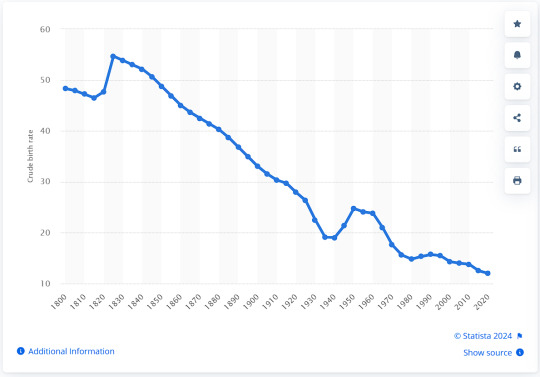
Now we enter the final death spiral of empires and welfare states: below replacement fertility rates and above GDP national debt!
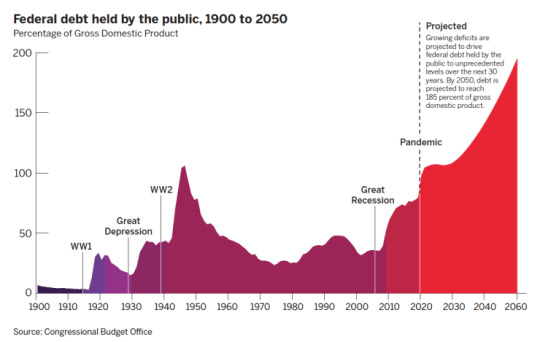
The group most prepared for the coming calamity, the group who predicted it, and who will emerge as victors are those who are internally pro-growth/pro population but maintain in-group preferences. The stats bear out:
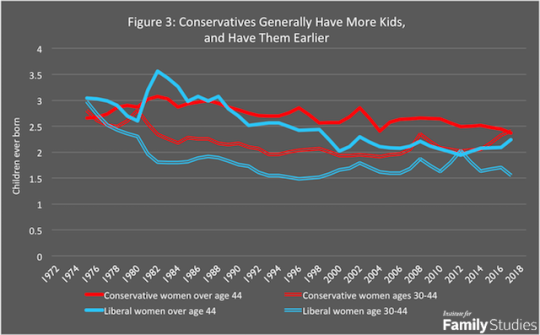
Now this shift isn't just conservatives but libertarians also. In a couple generations we have gone from 1% in the 70's to 10% in the 2010s and now easily 25% in the 2020's (many libertarians simply don't vote or vote republican). We will replace left-wingers, who only reproduce vampirically via public education, in the next generation. There is hope at the end of this journey but it will be difficult in the mean time. Prepare yourself accordingly.
40 notes
·
View notes
Text
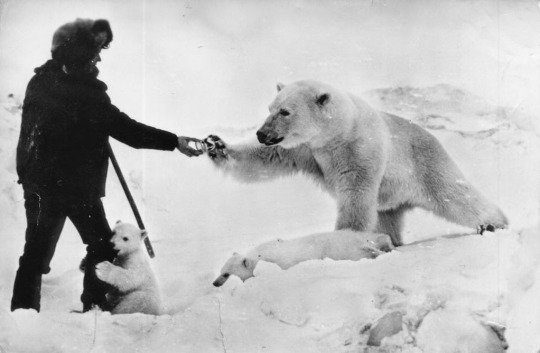
A surprisingly consistent thing in history is people coming up with plans involving enormous construction projects that are intended to have a short-term positive impact, which when looked at from both a modern perspective, would have enormously bad environmental impacts globally.
One such proposed plan came from the Soviet Union, where Derek Mead recounts how they at one point wished to melt the Arctic.
In an article for Motherboard, they wrote:
You might laugh, but while Soviet Russia was blessed with the largest land mass of any nation on Earth, much of it resource rich, putting that land to use was stunningly difficult. …Russia was already spending an enormous amount of money combating the ice. Exploiting the vast petroleum reserves of the Arctic and Siberia was crucial to the growth of the Soviet economy, but every well pitted far-flung men against frozen earth and wind.
This meant that in order to exploit the resources they felt they required to properly compete with the USA, they needed to thaw Siberia. This is where a Soviet scientist named Petr Mikhailovich Borisov comes into the picture.
Borisov proposed building a 55-mile long dam that stretched from Russia to Alaska across the Bering Strait, potentially one of the largest, most expensive projects in history, with the intention of blocking the flow of cold water into the Arctic from the Pacific so the warm water from the Atlantic would over time cause the temperature in the Arctic to rise, thus melting the ice cap.
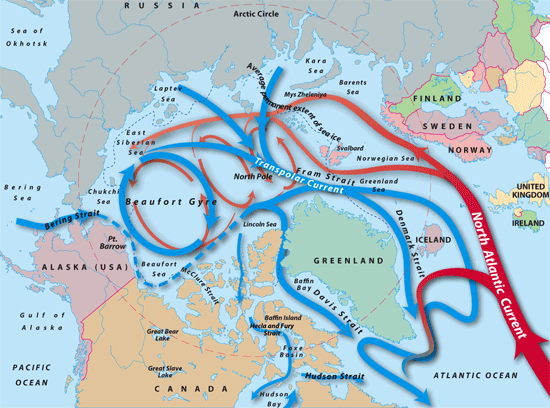
As bananas as this plan is, Mead contends that it nearly had America's support in the project, much the same way that the surprisingly similar plan to do the same in the 1800s did (albeit, that being an American plan to raise the temperature in America and Canada while freezing Europe).
Borisov dreamed of enlisting the US, Canada, Japan, and Northern Europe in the plan, as all would theoretically benefit from a warmer climate. Surprisingly, the US was intrigued by the idea. In fact, in a response to a series of questions sent in 1960 by the Bulletin of Atomic Scientists to presidential candidates Richard Nixon and John F. Kennedy, Senator Kennedy noted, as part of a larger point about the value of innovation in fostering cooperation, that the Siberia-Alaska dam was “certainly worth exploring.”
Amusingly this wasn't the only plan in this period to melt the Arctic as British scientist Julian Huxley, a cofounder of the United Nations Educational, Scientific and Cultural Organization (UNESCO), spoke at a conference in Madison Square Garden in 1945 about using nuclear bombs as “atomic dynamite [for] landscaping the Earth” (melting the polar ice cap).
Some have commented that considering the then recent bombings of Japan by the US this was in bad taste, but considering there were people who worked in the US government who repeatedly argued for "tactical" nuclear weapons usage (Henry Kissinger being one of them), I think that if there was enough public support behind it someone might have actually considered it.
34 notes
·
View notes
Text
On the Skidelsky/Fuller post I reblogged, I absolutely welcome automation given the following criteria:
1. The output is identical or, holistically, more positive than human labor output
2. This automation occurs within an economic system in which GDP growth (or similarly fraught metrics) is not the primary objective
3. The automation aids the sustainability of nature and humanity
The USA's agriculture industry is a wonderful example of modern automation failing all three of these criteria. Throughout the entire industrial revolution, agriculture has trended away from being a society-wide confederation of family/community-scale, labor-intensive smallholdings to our current reality of a small number of monolithic industrial farms that are maintained by astoundingly few people who operate increasingly complex and expensive equipment.
Our massive-scale industrial farms are fantastic at what they were designed for; they grow as much of a staple crop as possible without regard to human or environmental health, doing so using minimal labor. Fundamentally, it is an extractive industry. Fossil fuels are extracted to power the machinery, processing, and logistics systems. Nutrients are extracted from the soil to the point that crop growth can only be sustained with heavy amounts of industrial fertilizer input. Entire ecosystems are sacrificed when forests are cleared to be exploited and repeatedly battered with pesticides. This is all primarily to produce soybeans, feed corn, and cotton to then process into products like factory farm livestock feed-slurry, corn syrup, junk food, and sweatshop garments. Secondarily, it is to produce flavorless, nutrition-void produce that can be sold year-round. Consistency is the goal, although one may find that nature itself is curiously inconsistent.
This case study of automation's failings can be traced back to a few major factors:
1. Old-style agriculture work is disagreeable to the USA's perverted fascination for infinite GDP growth; each farm laborer that can be replaced by a machine is a potential worker that could move into a city (or suburb) and put in the same amount of hours at a higher-dollar job. It's just opportunity cost, and this is more-or-less what Skidelsky and Fuller find offensive about our current labor zeitgeist; instead of the now-jobless laborers being free to pursue their interests, they are instead shoehorned into some shitty desk job that produces a relatively greater amount of money to be leeched by executives and shareholders -- this is "more productive" to our economy on the basis of GDP growth and thus must be prioritized over agricultural labor.
2. Industrial approaches to large-scale agriculture are inherently reductive to an extreme extent. Nature is far more complex than Liebig or any other enlightenment thinker ever imagined. Industrialization is great at making cars or computer chips or Gucci jackets or whatever, as these are things that can be standardized with relative ease. Nature cannot be tamed and standardized in a similar way; ecosystems, particularly soil ecosystems, can vary massively even in small areas of the same climate type. Our agriculture systems cope with this simply by ignoring such factors and reducing crop growth to a formula. In X region, plant Y variety of Z crop on A date and apply a regimen of B-type fertilizer and C-type pesticide on D date etc etc. This is the most egregious reduction of something in all of history.
Liebig's reduction of agriculture to the NPK model, just three elements, is good for achieving the singular goal of making your plant of choice come out of the ground, but it ignores all the nuance of soil, climate, and evolution. The other factors don't matter. Modern lab-designed fertilizers often feature a plethora of additional micronutrients, but the goal is still to produce a healthy crop, not healthy soil. Soil itself is an organism, it is something that must be nurtured to be healthy; industrial pesticide/fertilizer regimens are to the soil as feed slurry/antibiotic regimens are to factory farm animals.
Natural processes are, itself, the greatest form of automation for agriculture. Plants and animals that are native to a region have evolved to grow there regardless of human intervention. It is our disruption of these processes that forces agriculture to be labor/resource-intensive. This isn't to say that everyone must immediately abandon all non-native foods and adopt a primarily undomesticated Ötzi diet, but instead, it's worth considering that the complexity of modern technology is not even close to being at parity with the complexity of nature; nature has a several billion year head start. There is no way to flawlessly "tame" it with technological solutions, but a comfortable middle ground can certainly be found.
If sustainable, climate-friendly food production is the primary objective of agriculture, this is far more easily achieved by small, ecology-considerate farms than massive, largely automated industrial farms. A healthy soil ecosystem will aid in growth, flavor, nutrition, and, (quite importantly) carbon sequestration. Broadforking, shoveling, and wheelbarrow-pushing is absolutely more labor intensive than sitting back in a huge John Deere tractor with GPS-based autopiloting features, but the extra labor can turn a woefully extractive process into one that is instead highly regenerative.
20 notes
·
View notes
Text
The future of innovation and efficiency that many governments and private companies dream of runs into ecological and geopolitical limits. But AI does not rely on raw materials only during the construction of its physical infrastructures; it does so throughout its cycle. For instance, data centres and servers need large amounts of water to cool down. According to a study published in Nature in 2021, Google and Microsoft declared using respectively 15.8 billion and 3.6 billion litres of water. We don’t know if these numbers are trustworthy. As a telling example, Microsoft has been involved in a scandal regarding the water expenditure of one of its data centres in the Netherlands. Whereas the technology company declared to the Dutch authorities that the centre consumed between 12 and 20 million litres, it transpired it was actually consuming 84 million. Meanwhile, in August 2022, Thames Water announced reviewing the water expenditure of data centres in London due to the drought scenario the capital faced that summer. While the average annual cooling system consumption of a small data centre in the US is estimated to be 25 500 000 litres, that of a person in Nigeria is 12 410 litres – 2 000 times less. AI is also energy intensive. The more data to be analysed, the higher the energy consumption. More sophisticated algorithms, which need long computational time, consume even more. For example, it is estimated that training an algorithm to automatically produce text uses 190,000 kWh; that is, 120 times more than the average annual consumption of a household in Europe in 2020. To generate this energy, raw materials such as organic matter, uranium, coal or water, among others, are again needed. Although some of the big tech companies claim that their energy is produced sustainably, the data shows another trend. In 2019, Greenpeace published a report about an Amazon Data Centre in Virginia (USA), which is considered to be one of the most important in Amazon’s global infrastructure. Greenpeace warned against the important growth in energy consumption in the region due to this data centre’s activities. Despite Amazon’s pledge to invest in “green” energy for this data centre, the reality is that its investment in fossil fuels has increased shamelessly. In 2021, data centres were estimated to consume 0.9-1.3% of global electricity demand. Given AI’s high energy consumption and the current energy crisis, the techno-optimistic dreams of governments and Silicon Valley’s companies could be dashed by the high price of energy.
57 notes
·
View notes
Text
Excerpt from this media report from the Intergovernmental Platform on Biodiversity and Ecosystem Services:
Environmental, social and economic crises – such as biodiversity loss, water and food insecurity, health risks and climate change – are all interconnected. They interact, cascade and compound each other in ways that make separate efforts to address them ineffective and counterproductive.
A landmark new report was launched today by the Intergovernmental Platform on Biodiversity and Ecosystem Services (IPBES). The Assessment Report on the Interlinkages Among Biodiversity, Water, Food and Health – known as the Nexus Report - offers decision-makers around the world the most ambitious scientific assessment ever undertaken of these complex interconnections and explores more than five dozen specific response options to maximize co-benefits across five ‘nexus elements’: biodiversity, water, food, health and climate change.
Approved on Monday by the 11th session of the IPBES Plenary, composed of representatives of the 147 Governments that are members of IPBES, the report is the product of three years of work by 165 leading international experts from 57 countries from all regions of the world. It finds that existing actions to address these challenges fail to tackle the complexity of interlinked problems and result in inconsistent governance.
“We have to move decisions and actions beyond single-issue silos to better manage, govern and improve the impact of actions in one nexus element on other elements,” said Prof. Paula Harrison (United Kingdom), co-chair of the Assessment with Prof. Pamela McElwee (USA). “Take for example the health challenge of schistosomiasis (also known as bilharzia) – a parasitic disease that can cause life-long ill health and which affects more than 200 million people worldwide – especially in Africa. Treated only as a health challenge – usually through medication – the problem often recurs as people are reinfected. An innovative project in rural Senegal took a different approach – reducing water pollution and removing invasive water plants to reduce the habitat for the snails that host the parasitic worms that carry the disease – resulting in a 32% reduction in infections in children, improved access to freshwater and new revenue for the local communities.”
“The best way to bridge single issue silos is through integrated and adaptive decision-making. ‘Nexus approaches’ offer policies and actions that are more coherent and coordinated – moving us towards the transformative change needed to meet our development and sustainability goals,” said Prof. McElwee.
The report states that biodiversity – the richness and variety of all life on Earth – is declining at every level from global to local, and across every region. These ongoing declines in nature, largely as a result of human activity, including climate change, have direct and dire impacts on food security and nutrition, water quality and availability, health and wellbeing outcomes, resilience to climate change and almost all of nature’s other contributions to people.
Building on previous IPBES reports, in particular the 2022 Values Assessment Report and the 2019 Global Assessment Report, which identified the most important direct drivers of biodiversity loss, including land- and sea-use change, unsustainable exploitation, invasive alien species and pollution, the Nexus Report further underscores how indirect socioeconomic drivers, such as increasing waste, overconsumption and population growth, intensify the direct drivers – worsening impacts on all parts of the nexus. The majority of 12 assessed indicators across these indirect drivers – such as GDP, population levels and overall food supply, have all increased or accelerated since 2001.
“Efforts of Governments and other stakeholders have often failed to take into account indirect drivers and their impact on interactions between nexus elements because they remain fragmented, with many institutions working in isolation – often resulting in conflicting objectives, inefficiencies and negative incentives, leading to unintended consequences,” said Prof. Harrison.
3 notes
·
View notes
Text

What needs to be done in the USA to progress?
Interesting question! Many factors can contribute to the progress of a country like the United States, and different people may have different views on the best approach. Here are a few key areas that are often discussed:
### 1. Education
Investing in a robust education system can ensure that future generations are well-equipped with the knowledge and skills they need to succeed. This includes improving access to quality education, supporting teachers, and incorporating modern technologies and methodologies into the curriculum.
### 2. Healthcare
A strong healthcare system is essential for the well-being of the population. Ensuring everyone has access to affordable and quality healthcare can lead to a healthier, more productive society.
### 3. Infrastructure
Modernizing infrastructure, such as roads, bridges, public transportation, and internet access, can improve the quality of life and make the economy more efficient.
### 4. Economic Policies
Implementing policies that support economic growth, job creation, and innovation can help boost the economy. This might include supporting small businesses, investing in research and development, and creating a favorable environment for entrepreneurship.
### 5. Social Equality
Promoting social equality and addressing issues such as poverty, discrimination, and inequality can lead to a more inclusive society where everyone has the opportunity to thrive.
### 6. Environmental Sustainability
Protecting the environment and addressing climate change can ensure that future generations inherit a healthy planet. This includes investing in renewable energy, reducing carbon emissions, and promoting sustainable practices. Good Morning World and Asia From: Steven P. Miller, Jacksonville Florida USA @ParkermillerQ, gatekeeperwatchman.org, TM, Founder and Administrator of Gatekeeper-Watchman International Groups. #GWIG, #GWIN, #GWINGO, #SPARKERMILLER Friday, January 31, 2025, Jacksonville, Florida USA 5:31:37 AM EST
2 notes
·
View notes
Text
Personal Statement
I started my career as a monitoring and evaluation associate at NICE Indonesia in 2019. We provide a 5-year grant to 12 CSOs in Indonesia to develop their organizations. During those 5 years, we evaluate their performance annually based on the training and financial interventions provided. Some of the organizations I directly supervised include Yayasan Gerak Bareng, Yayasan Munashoroh Indonesia, and Yayasan Gema Insani.
In addition to the annual reviews I conducted, I also took on side jobs to measure the impact of several organizations. My team and I have measured the impact for Schneider Electric Foundation Indonesia, Yayasan Infra Digital Indonesia, Perkumpulan Ibu Pembelajar Bahagia (Lab Belajar Ibu), Komunitas Happiness Family, and wrote impact reports for the SMK Pusat Keunggulan assistance program in 2023 on behalf of the Directorate of Vocational High Schools, Ministry of Education and Culture of the Republic of Indonesia. I attached some files here : https://drive.google.com/file/d/1mbhbs0wAkwZtBzbxgJ-1xzdZhXMX3XdJ/view?usp=sharing
Apart from working in monitoring and evaluation, as a registered nurse in Indonesia, I am also active in several health education initiatives, particularly regarding the impact of the environment on health. My friends and I founded the Emcekaqu Sehat Berdaya Foundation, which campaigns for open defecation-free zones in Pandeglang, Banten. We observed the impact of poor sanitation on children's health, especially given the high stunting rates in the area, and we actively campaign for behavior change to eliminate open defecation. From this work, I had the opportunity to participate in several fellowships related to the environment, such as the Young Water Fellowship in Belgium in 2017, the Young South East Asia Leadership Initiative in Environmental Management in the USA in 2018, and the International One Health Camp in Vietnam in 2019.
Besides my professional life, I experienced a turning point in my personal life when my first daughter died during the delivery process. As a nurse, I know it's not just me but thousands of mothers in Indonesia who have experienced this. Since then, I pledged to contribute to reducing neonatal mortality. I decided to become a breastfeeding counselor, and now I have more than 50 clients, both online and offline.
Pursuing an MPH at the University of Melbourne, I blend my interest in planetary health and maternal and child health. Last semester, I took nutrition policy and politics as my elective because nutrition issues are currently rising in Indonesia, and I wanted a broader perspective beyond health. This semester, I took Planetary Health and Women’s and Global Health as my electives to accommodate my interests. As an Australia Awards Awardee, I know my studies are not just for me but for the greater good of Indonesia.
My grades might not be very good because the first semester of my MPH was the first time I lived abroad with only my family of three. I juggled academic life, being a wife, and being a mother to a 2.5-year-old daughter. Therefore, this semester, I strategized to take courses with shorter durations, so I can better balance my work and life. Thus, being involved in evaluation studies in maternal and child health excites me greatly. Furthermore, 1000 Days Of Fund is one organization I keep an eye on because they address issues holistically, from cadre training to providing growth blankets to parents.
ceritanya bikin personal statement untuk ngelamar jadi research assistant gitu di kampus, hwaa bismillah ya Allah dengan panduan dan pendampinganmu :" laa hawlaa walla quwwata illa billah
4 notes
·
View notes
Text
"King Kong" (1976) Blog Essay
By: Dayanara Ramos
The 1976 remake of "King Kong" is not exactly a regurgitation of the 1933 film with the monster included, but rather a process of cinematic development like the socioeconomic anxieties of the time mirrored in the story. Instead of being a visual copy of the 1933 film, it is visually surreal in that it revisits the visual style of the 1976 version directed by John Guillermin and produced by Dino De Laurentiis and is a more adventure-like version of the original story. Nevertheless, it utterly makes that by taking the frame of early 1970's USA, exchanging the movie crew. The interconnection of present-day economic issues into the plot is also achieved in a subtle and skillful manner. The film "King Kong" (1976) was released in theatres by Paramount Pictures, and it premiered on December 17, 1976. Acting as a $24-m budget film, the picturesque landscapes and incredible mechanical Kong were supposed to be the attractive features of the events and impress the audiences of the 1970s. The plot is centered on the oil crew of Fred Wilson (Charles Grodin) who by some way meets the mighty monkey King Kong on the island where they fortunately landed on to conduct the expedition. They resolve to bring the primate to New York in an ambitious enterprise that will get them millions of dollars and wealth. Even though the movie is about the relationship between Kong and Dwan (played by Jessica Lange) in her first role after the shipwreck will be saved from it. A beautiful lady and a monstrous creature are seen in an unedited gameplay. This is the manifestation of romantic which is a tragedy. With a ravenous audience at the end of 1976, it received quite a mixture of reviews, but nevertheless managed to provide one of the most engaging and breath-taking experiences with box office growth of $90 million worldwide. The famous critics such as Roger Ebert gave it a rating of three out of four stars, cutting off its extraordinary special effects and a more serious and less captivating approach compared to the original. However, some of the dialogues and the pacing of the film were pointed out as shortcomings in the film's making. On the other hand, the performance of Kong (guided by Rick Baker, who designed a suit for ape) garnered kudos from spectators because it functioned to evoke sympathy. This is a significant break from the more monstrous representation used in the previous versions of Beauty and the Beast as suggested by John Kenneth.
The 1970s were a flashing sign of the economic turmoil that culminated with the oil crisis of 1973. The historic context is the key factor that allows one to understand the essence of the given filmmaking; it is introducing the oil exploration as a parallel to the film period greed and self-defeating rapture over the resources. The transition in the plot reflects the environmental and ethical problems of the time, presenting Kong as a victim of corporate exploitation instead of just a movie star.
The "King Kong" film adaptation of 1976 which is different from the original 1933 version in the fact that the film's cinematography is in full color; this makes the escapism of Skull Island more intense and makes the grandeur of the 70s New York more than ever so palpable.

The movie makes use of a romantic and soft approach in Dwan and Kong scenes whose visuals represent this manner immensely. These scenes are obtained with a dreamy effect that shows their developing but finally doomed relationship. The primitiveness of the visual effects, which should be attributed to the period it was produced, was nevertheless ground-breaking in its field, especially on account of the special effects incorporating a life-size model of Kong in some scenes, which provided a tangible yet unwieldy authenticity to the sequences that depicted the monster's interactions.

"Kong" (1976) keeps mostly to the plot (read 'motion picture' template) of this type of movie, along with a rare theme of coercion and liberation. Nevertheless, it adds a new aspect by showing how the emotional and moral impact of Kong's capture is more important than the physical aspects. In the film, the screenplay gives Kong another plotline that is emotional and sorrowful, especially in this final moment as he is atop WTC instead of the Empire State Building. It expresses the modern outlook and the creative styling of the metropolitan New York skyline.
In the end, "King Kong" (1976) is a movie that holds a special place in the history of cinema of the 1970s. It is closely related to the cinematic legacy of the 1970s and the social and economic stories of that era. The movie tries to blend magic, the unknown, tragedy, and evolutionary issues by making significant advances around special effects while exploring the sphere of moral congruence profoundly and creatively. With the power to enchant us as the 1933 original does, it is still calm stories of humankind's cruel domination of nature and such a tragic price we pay.
6 notes
·
View notes
Text
Unveiling the Job Market: How Many Jobs Are Available in Finance Services in 2024?

In the ever-evolving landscape of finance, the job market plays a pivotal role in shaping career aspirations and industry trends. As we step into 2024, professionals and aspiring individuals are eager to uncover the opportunities awaiting them in the realm of finance services, particularly in the United States. This article sheds light on the abundance of opportunities available in the finance services.
Exploring the Finance Job Market Landscape:
Quantifying Opportunities:
How many jobs are available in finance in the USA?
Analyzing recent statistics and projections to gauge the scale of employment opportunities.
Factors influencing job availability, such as economic conditions, technological advancements, and regulatory changes.
Diverse Sectors, Diverse Opportunities:
Breaking down the finance sector into subcategories, including banking, investment management, insurance, and consumer services.
Highlighting the unique job prospects within each sector and the skill sets required to excel.
Identifying emerging roles and specialties that are gaining prominence in response to market demands and industry shifts.
Finance in the Digital Age:
Examining the impact of technology on job creation and the transformation of traditional finance roles.
The rise of fintech companies and their contribution to job growth, particularly in areas like digital banking, payment processing, and financial analytics.
The demand for professionals with expertise in data analysis, cybersecurity, and artificial intelligence within the finance sector.
Investment Management: A Thriving Field:
How many jobs are available in investment management?
Unveiling the job opportunities within investment firms, asset management companies, and hedge funds.
The significance of skilled portfolio managers, financial analysts, and risk assessment specialists in driving investment strategies and maximizing returns.
Exploring the global reach of investment management careers and the potential for growth in international markets.
Consumer Services: Meeting the Needs of Individuals:
Evaluating the job market within consumer-focused finance services, including retail banking, wealth management, and financial advising.
The demand for client relationship managers, financial planners, and retirement advisors in assisting individuals with their financial goals.
The role of personalized financial services and digital platforms in catering to the diverse needs of consumers and enhancing their financial literacy.
Trends Shaping the Future:
Anticipating future job trends in finance services and the skills that will be in high demand.
The growing importance of sustainable finance and environmental, social, and governance (ESG) investing, leading to opportunities in green finance and impact investing.
The influence of geopolitical factors, regulatory reforms, and demographic shifts on the finance job market landscape.
Conclusion:
As we go through 2024, the finance job market in the United States continues to offer a lot of opportunities across various sectors. Whether aspiring to go into investment management, consumer services, or the dynamic world of fintech, individuals with the right skills and expertise are well-positioned to thrive in this ever-evolving industry. By staying abreast with market trends, honing relevant skills, and embracing innovation, professionals can seize the abundant opportunities awaiting them in the realm of finance services.
5 notes
·
View notes
Text
Unveiling the Beauty and Allure of Oregon: The Beaver State
Oregon, a state nestled in the Pacific Northwest of the USA, is famous for its stunning natural landscapes, from towering evergreen forests to dramatic coastlines. But Oregon's charm goes beyond scenery. Let's dive into what makes this state special!
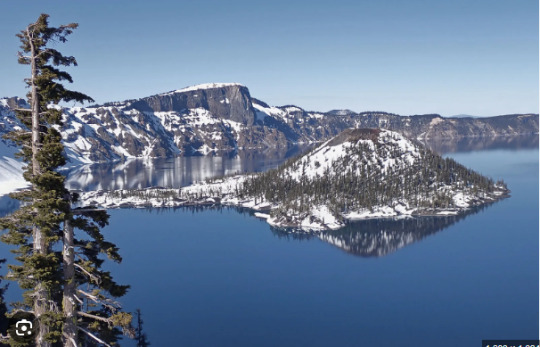
Is Oregon a Good Place to Live?
Oregon consistently ranks high in livability surveys. It offers a good balance between outdoor activities, a strong job market (especially in tech!), and a laid-back lifestyle.
Cities in Oregon:
Portland: Oregon's largest city, known for its coffee scene, microbreweries, and quirky vibe.
Salem: Oregon's capital city, with a rich history and beautiful state capitol building.
3 Facts About Oregon:
Nature Lover's Paradise: Hike through ancient forests, explore volcanic wonders like Crater Lake, or marvel at the mighty Columbia River.
Foodie Destination: From fresh seafood to delicious wines produced in the Willamette Valley, Oregon offers a vibrant culinary scene.
Progressive Spirit: Oregon is known for its progressive policies and focus on environmental protection.
Why People Love Oregon:
Outdoor Activities: Hiking, camping, fishing, kayaking - Oregon caters to all your adventurous desires.
Unique Culture: From quirky festivals to a thriving craft beer scene, Oregon offers a taste of something different.
Beautiful Scenery: Breathtaking mountains, stunning coastline, and lush forests make Oregon a visual treat.

Best Things About Oregon:
Natural Beauty: Oregon boasts some of the most stunning landscapes in the US.
Pleasant Climate: With mild temperatures and wet winters, Oregon offers a comfortable climate.
Cost of Living in Oregon:
Oregon's cost of living is slightly above the national average, with Portland being the most expensive city.
Oregon's Biggest Cities:
Portland
Salem
Why is Oregon Called Oregon?
The exact origin is debated, but it likely comes from a French term for "river" or a Native American word.
How Many Cities Does Oregon Have?
Oregon has numerous cities and towns, each offering its own unique charm.
Safety and Peacefulness:
Oregon is generally considered a safe state with a peaceful atmosphere.
Oregon's Fastest Growing City:
Bend, known for its outdoor recreation opportunities, is experiencing rapid growth.
Where do People Move to Oregon From?
People move to Oregon from all over the US, particularly California and Washington.
Is Oregon Welcoming to Immigrants?
Oregon has a welcoming reputation for immigrants, with many resources and support programs available.
Universities in Oregon:
The University of Oregon (Eugene)
Oregon State University (Corvallis)
Beauty and History:
Oregon's beauty and rich history make it a captivating place to explore and call home.
So, is Oregon for you? With its stunning scenery, exciting cities, and focus on a good life, Oregon offers something special for everyone.
Final Thoughts about Oregon state:
Oregon truly offers a unique blend of experiences. Here's a summary to help you form your final thoughts:
For nature lovers: Oregon is a wonderland. From majestic mountains to dramatic coastlines, there's endless adventure for hikers, campers, and outdoor enthusiasts.
For city dwellers: Portland provides a vibrant, quirky urban experience with a thriving food and beer scene. Salem offers a taste of history with its beautiful capitol building.
For those seeking a good life: Oregon boasts a strong job market, a focus on environmental protection, and a generally peaceful atmosphere.
The trade-off: The cost of living might be slightly higher than the national average, especially in Portland.
Ultimately, Oregon's charm depends on your priorities. If stunning scenery, outdoor activities, and a progressive spirit resonate with you, Oregon could be a perfect fit.
#oregon#washington#washington state#utah#pennsylvania#maine#new york city#texas#new york#chicago#houston#atlanta#virginia#georgia#tennessee#missouri#south carolina#north carolina#miami#us politics#stardew valley#cats of tumblr#palestine#dimension 20#science#bridgerton#lesibian
2 notes
·
View notes
Text
Rise of Sustainable Manufacturers in the USA

Introduction
Denim has been a staple fabric in American fashion for decades, worn by people from all walks of life. However, the traditional methods used to produce denim have had a significant impact on the environment. In recent years, there has been a growing trend toward sustainability in the fashion industry, and denim manufacturers are no exception. Sustainable denim production methods have been gaining popularity in the USA as a way to reduce the environmental footprint of denim production. In this blog, we will explore the rise of sustainable clothing manufacturers in the USA, including the benefits of sustainable denim, the challenges that manufacturers face, and the trends driving the demand for eco-friendly denim. We will also look at some of the leading sustainable denim brands and their efforts to create denim that is both fashionable and environmentally responsible.
Rise Of Apparel Manufacturers in the US
The rise of apparel manufacturers in USA can be attributed to several factors, including the increasing demand for sustainable and eco-friendly fashion, the rise of e-commerce, and the popularity of athleisure wear. Both sportswear and denim manufacturers have played a significant role in this trend.
Sportswear manufacturers have been at the forefront of designing and producing athletic apparel that meets the needs and wants of consumers. In recent years, they have also placed a greater emphasis on sustainability, using eco-friendly materials and production methods to reduce their environmental impact. This has led to the rise of sustainable sportswear brands in the US, such as Patagonia and Adidas, which have gained a loyal following among consumers who prioritize sustainability in their purchasing decisions.
Similarly, denim manufacturers have also been adapting to the growing demand for sustainable fashion. Traditional denim production can be highly resource-intensive, but sustainable denim production methods have emerged as a cost-effective and eco-friendly alternative. Denim manufacturers have been adopting waterless or low-water production methods and using organic cotton and recycled materials in their products. The rise of sustainable denim brands, such as Levi’s and Nudie Jeans, reflects the shift towards eco-friendly fashion in the US.
The popularity of e-commerce has also contributed to the rise of apparel manufacturers in the US. Online platforms have made it easier for smaller, independent brands to reach a wider audience and compete with larger, established brands. This has led to a greater diversity of fashion options for consumers and has helped to drive innovation in the industry.
Finally, the rise of athleisure wear has also contributed to the growth of apparel manufacturers in the US. Athleisure wear has become increasingly popular in recent years, with consumers seeking comfortable and functional clothing that can be worn both for exercise and everyday wear. This trend has led to the emergence of new sportswear brands and has also influenced the designs of traditional fashion brands.
In conclusion, the rise of apparel manufacturers in the US is a complex trend that reflects changing consumer preferences and industry innovations. Both sportswear and denim manufacturers have played a significant role in this trend by adapting to the growing demand for sustainable and eco-friendly fashion, as well as by embracing e-commerce and responding to the popularity of athleisure wear.
The Rise of Sustainable Denim
The rise of sustainable denim is a growing trend. It has become more popular in the last few years, as people are becoming more aware of how their clothing impacts the environment. Sustainable denim is made from recycled materials and uses less chemicals, water, and energy during its production process.
Sustainable jeans are created using more sustainable processes that don’t harm the environment or contribute to climate change by releasing greenhouse gases into our atmosphere. There are many ways you can make sure your jeans are environmentally friendly: buying organic cotton; choosing hemp or bamboo fibers over pesticides; using less dye (which requires lots of chemicals) than conventional dyes do; avoiding leather patches made from real animal skins; avoiding zippers made out of plastic since they take hundreds of years before breaking down completely!
How Sportswear Manufacturers Are Lead Trendsetters
Sportswear manufacturers are often considered trendsetters because they are at the forefront of designing and creating new athletic apparel that meets the needs and wants of athletes and consumers alike. These manufacturers invest heavily in research and development to create high-quality, functional, and stylish sportswear that can improve performance, enhance comfort, and meet the latest fashion trends.
One of the ways that sportswear manufacturers can lead trends is by working closely with professional athletes and teams. By understanding the specific needs of athletes, manufacturers can design products that are tailored to their unique requirements, whether it be for performance or recovery. This close collaboration allows them to create innovative designs and materials that are tested and proven by some of the world’s top athletes, which then leads to greater demand from consumers.
Another way that sportswear manufacturers set trends is through their marketing and advertising campaigns. These companies often employ high-profile athletes and celebrities to promote their products, and they leverage social media and other platforms to showcase their latest designs and collections. This helps to build hype and anticipation around new product releases, and it can also influence the fashion trends of consumers who want to emulate the styles of their favorite athletes and celebrities.
In addition, sportswear manufacturers also have the advantage of being able to quickly adapt to changing trends and consumer preferences. They have the resources and expertise to pivot their designs and materials to meet the demands of the market, whether it be for sustainable and eco-friendly materials, or new technologies such as smart fabrics that can monitor and enhance athletic performance.
Overall, sportswear manufacturers are leaders in the fashion industry because they are constantly pushing the boundaries of what is possible with athletic apparel, and they have a keen understanding of the needs and wants of athletes and consumers. Their innovative designs and marketing strategies set the trends for the latest styles and technologies in sportswear, and they continue to drive the industry forward with their creativity and ingenuity.
Sustainable Denim Is a Cost-Effective Option for Apparel Manufacturers
Sustainable denim is becoming a popular choice for American clothing manufacturers because it offers a cost-effective option that benefits both the environment and consumers. Traditional denim production can have a significant impact on the environment due to the large amounts of water, energy, and chemicals required in the process. Sustainable denim, on the other hand, utilizes eco-friendly production methods that reduce water consumption and chemical usage, resulting in a lower environmental footprint.
In addition to the environmental benefits, sustainable denim can also be cost-effective for manufacturers. While the initial investment in sustainable production methods may be higher, the long-term savings can be significant. For example, waterless or low-water production methods can save up to 95% of the water typically used in denim production, which can result in significant cost savings on water bills. Sustainable denim production can also reduce the need for expensive chemical treatments and can even extend the life of the denim, reducing the need for frequent replacements and saving on production costs.
Moreover, sustainable denim is increasingly in demand by consumers who are becoming more environmentally conscious and are willing to pay a premium for sustainable products. This demand can lead to higher profit margins for manufacturers who produce sustainable denim. By offering eco-friendly options, manufacturers can also appeal to a growing segment of consumers who prioritize sustainability when making purchasing decisions.
Overall, sustainable denim can be a cost-effective option for apparel manufacturers. By reducing their environmental impact, manufacturers can save on production costs and appeal to environmentally conscious consumers, which can lead to increased sales and profits. As sustainability becomes increasingly important in the fashion industry, manufacturers who prioritize eco-friendly production methods will likely have a competitive advantage.
What is Sustainable Denim?
Sustainable denim is a fabric that’s made from recycled cotton. The process of recycling cotton uses less water, energy, and chemicals than conventional methods. It also results in a more environmentally friendly product for apparel manufacturers to use and consumers to buy.
Sustainable denim is more durable than conventional denim because it doesn’t have any toxic dyes or finishes applied to it during manufacturing — it’s just pure white cotton! This means you can wear your favorite pair of jeans without worrying about how much they’ll fade over time (and if you want them faded out even quicker, just wash them with dark clothing). Plus, the less chemical-laden dye that goes into making sustainable clothes means they won’t rub off on other items in your closet as conventional dyes do!
Finally — and perhaps most importantly — sustainable clothing feels better against your skin than traditional fabrics like polyester blends do because there aren’t any harsh chemicals present during production processes that might irritate sensitive areas such as armpits/groins/etc.
Rising Demand for Sustainable Denim
If you’re like most people, you probably don’t think about where your clothes come from and what they’re made of. But if you do, chances are good that sustainability is at least part of the reason for your purchase decision.
Sustainable apparel is growing in popularity — and for good reason! From its use of organic materials to its emphasis on manufacturing processes that minimize waste and environmental impact, sustainable apparel helps us all feel better about ourselves while reducing our carbon footprint. And it’s not just an abstract concept: The demand for sustainable clothing has risen dramatically in recent years.
Why Is Sustainable Denim Important?
Sustainable denim is an important movement for a variety of reasons.
First, it helps reduce the impact of denim on our environment. Second, it helps reduce the impact of denim on human health by reducing harmful chemicals and toxins in clothing production. Third, sustainable fashion increases the quality of life for workers in supply chains by providing fair wages and safe working conditions; this also benefits consumers who buy sustainable products because they’re helping create jobs that improve lives instead of destroying them through exploitation or abuse.
The Future of Sustainable Denim
As the demand for sustainable clothing continues to grow, so will the industry’s ability to meet it. If you look at a few key indicators of sustainability in denim over time (e.g., organic cotton production), they’ve already been on an upward trajectory since 2010 and show no signs of slowing down. This means that as we move forward into 2019 and beyond, we can expect to see more and more brands offering sustainable options at different price points — and even some mainstream retailers getting in on the action too!
The Demand for Sustainable Apparel Is Growing
The demand for sustainable apparel is growing. Consumers are becoming more aware of the effects of their purchases on the environment and are looking for ways to make better choices. Sustainable clothing can help them do this, but there’s still a lot of confusion about what “sustainable” means and how it affects the quality of the product.
Sustainable apparel is an important trendsetter in the fashion industry because it helps consumers understand that they have more options than simply buying new clothes every season or two. It also allows manufacturers to create innovative products by using recycled materials in creative ways that don’t compromise style or performance — and can even improve both!
Conclusion
The future of sustainable denim is bright and the demand for sustainable apparel is growing. Apparel manufacturers are finding new ways to create denim that’s both environmentally friendly and stylish.
#american clothing manufacturers#denim manufacturers in usa#apparel manufacturers#apparel manufacturers in usa
4 notes
·
View notes
Text
Mining on Indigenous reservations in the Brazilian Amazon has increased 1,217% in the last 35 years

- By Elton Alisson , Agência FAPESP -
The last 35 years at the Brazilian Legal Amazon (an area spanning nine Brazilian states defined by federal law for environmental protection and developmental purposes) saw wildcat mining activities on Indigenous reservations expand from 7.45 square kilometers (km²) of occupied area in 1985 to 102.16 km² in 2020, a 1,217% increase.
All mining in these reservations is illegal. Wildcat prospecting in the Kayapó, Munduruku, and Yanomami reservations accounts for 95% of the total.
These are some of the key findings of a study conducted by researchers at Brazil’s National Space Research Institute (INPE) and the University of South Alabama (USA) in the United States. An article on the study is published in the journal Remote Sensing.
“We observed steady expansion of mining on Indigenous reservations between 1985 and 2020, with particularly fast growth from 2017 on. In that year, illegal mining activities occupied 35 km² of Indigenous land. By 2020, they had expanded to almost 103 km²,” Guilherme Augusto Verola Mataveli, first author of the article, told Agência FAPESP. Mataveli is currently a postdoctoral researcher in INPE’s Earth Observation and Geoinformatics Division and has a scholarship from FAPESP.
The other authors of the article include Michel Eustáquio Dantas Chaves, also a researcher at INPE, and Elton Vicente Escobar Silva, a PhD candidate at INPE.
To locate mining activities on Indigenous reservations, the researchers analyzed a dataset for the period 1985-2020 from MapBiomas, a collaborative network of NGOs, universities and tech startups that maps land use and land cover across Brazil.
MapBiomas provides annual land use and land cover maps for the entire Brazilian territory at a spatial resolution of 30 meters, based on automatic classification of Landsat images using the Random Forest machine learning algorithm.
“The system classifies images automatically and can distinguish between areas of forest with or without mining activities, especially areas where the soil is bare and the visible characteristics are quite different from areas with plant cover,” Mataveli said.
However, the system has some limitations when it comes to detecting mining activities on Indigenous reservations, such as the impossibility of classifying gold panning and similar activities carried out using equipment on boats anchored in rivers and smaller areas where the forest cover has not been cleared even though wildcat prospecting goes on there.
“The growth in mining on Indigenous reservations in the Brazilian Legal Amazon as detected by our study was alarming enough, but it was probably an underestimate given these limitations in the dataset we used,” Mataveli said.
Growing encroachment by illegal miners
The researchers found that gold is produced by 99.5% of the illegal mining operations on Indigenous reservations in the Amazon. The remaining 0.5% produces cassiterite, the ore from which tin is derived.
The growth of mining in the period was most intense on the Kayapó reservation, where it occupied an area of 77.1 km² in 2020, or almost 1,000% more than in 1985 (7.2 km²).
On the Munduruku reservation, it expanded from 4.6 km² in 2016 to 15.6 km² in 2020. On the Yanomami reservation, it expanded from 0.1 km² to 4.2 km² in the period.
“The government must intensify oversight, monitoring and law enforcement in these areas in order to halt the advance of illegal mining,” Mataveli said.
The Yanomami, living on a reservation demarcated in 1992, are the most isolated of the three communities, he added. For a long time, this isolation hindered encroachment by wildcat prospectors, but rising international gold prices and weakening protection of the Amazon in recent years have boosted investment in infrastructure for access to the area, which is protected by law. “The Yanomami reservation became the new frontier for illegal mining because of this combination of factors,” he said.
The area occupied by the activity on this reservation exceeded 2 km² for the first time in 2018, according to the study. Since then, encroachment and human rights violations have multiplied as illegal mining has advanced.
In 2022, the Federal Police (an agency of the Ministry of Justice in Brazil) observed a 505% increase in illegal mining along the Uraricoera River, a major artery for the Yanomami. Their leaders estimate that more than 20,000 wildcat prospectors have invaded the reservation. The Yanomami population is believed to total about 30,000. Malaria and other infectious diseases have spread swiftly in step with all this encroachment.
“The tragedy and humanitarian crisis we’re seeing now in the Yanomami community was perfectly predictable,” Mataveli said.
To reverse the trend, the first step should be to identify and monitor the Indigenous areas where illegal mining has increased most in recent years. It is also necessary to curb deforestation. Mining in the Amazon, including the Indigenous reservations there, occurs after the forest has been cleared, Mataveli noted.
“Illegal mining in the Amazon is very closely associated with deforestation because the forest has to be cleared before mining can begin,” he said.
The article “Mining is a growing threat within Indigenous lands of the Brazilian Amazon” is at: www.mdpi.com/2072-4292/14/16/4092.
This text was originally published by FAPESP Agency according to Creative Commons license CC-BY-NC-ND. Read the original here.
--
Read Also
Amazon forest: Disturbance is changing how plants are dispersed
#mining#illegal mining#brazil#amazon forest#yanomami#indigineous people#nature#biodiversity#forest#kayapó#munduruku#data science
2 notes
·
View notes
Text
Water Soluble Films Market Size, Growth Trends, and Future Outlook (2024-2032)
Introduction
The water soluble films market is rapidly gaining momentum due to rising environmental concerns and the increasing demand for biodegradable and sustainable packaging solutions. Water soluble films, primarily made from polyvinyl alcohol (PVA), offer an eco-friendly alternative to traditional plastics. These films are widely used in industries such as agriculture, pharmaceuticals, food packaging, and home care due to their ability to dissolve in water without leaving any residue.

Market Overview
Current Market Size and Growth Trends
The global water soluble films market was valued at USD 550 million in 2023 and is projected to grow at a CAGR of 7.8% from 2024 to 2032, reaching approximately USD 1.1 billion by 2032. This growth is driven by the increasing focus on sustainability, stringent government regulations on plastic usage, and the growing adoption of water soluble films across various sectors.
Regional Market Insights
North America: A leading market, driven by the strong demand for sustainable packaging in the detergent, pharmaceutical, and agrochemical sectors.
Europe: Significant growth due to stringent environmental regulations and the rising adoption of biodegradable materials.
Asia-Pacific: The fastest-growing region, with countries like China, India, and Japan investing heavily in eco-friendly packaging solutions.
Latin America & Middle East: Gradually expanding markets, with increasing awareness about sustainable packaging and environmental impact.
Key Market Drivers
Increasing Focus on Sustainability: Rising environmental concerns and regulations against single-use plastics are driving the demand for water soluble films.
Growing Use in Detergent Packaging: Water soluble films are widely used for single-dose detergent pods and capsules, reducing plastic waste.
Advancements in PVA Technology: Innovations in polyvinyl alcohol-based films enhance durability and solubility, expanding their applications.
Rising Demand in the Pharmaceutical Industry: Used for packaging unit-dose medicines, reducing contamination risks and improving convenience.
Leading Players in the Water Soluble Films Market
Several key players dominate the market with continuous innovations and strategic expansions:
Kuraray Co., Ltd. (Japan) – A leader in polyvinyl alcohol (PVA) films with a strong focus on biodegradable solutions.
Aicello Corporation (Japan) – Specializes in water soluble films for industrial, agricultural, and packaging applications.
Monosol LLC (USA) – Known for its innovative water soluble film solutions in the detergent and agrochemical sectors.
Nippon Gohsei (Japan) – Offers high-performance PVA films for diverse applications.
Sekisui Specialty Chemicals (USA) – Focuses on sustainable and biodegradable PVA films for industrial use.
Challenges and Roadblocks
Despite its promising growth, the water soluble films market faces several challenges:
High Production Costs: PVA films are more expensive than conventional plastic films, limiting their widespread adoption.
Limited Consumer Awareness: Many end-users are unaware of the environmental benefits of water soluble films.
Moisture Sensitivity: These films can degrade prematurely in high-humidity environments, affecting performance.
Recycling and Disposal Infrastructure: The lack of proper disposal and composting infrastructure can hinder market growth in some regions.
Future Outlook
The water soluble films market is poised for significant growth, with key trends shaping its future:
Increased Focus on Biodegradable Materials: Reducing reliance on fossil fuel-based plastics.
Expansion in Agrochemical Applications: Water soluble films are gaining traction in the agriculture sector for pesticide packaging, reducing human exposure.
Growth of Smart Packaging Solutions: Combining water solubility with intelligent packaging features for better product protection and sustainability.
Collaborations with Government and Non-Profit Organizations: Promoting awareness and adoption of eco-friendly packaging solutions.
Conclusion
The water soluble films market is at the forefront of the sustainable packaging revolution, driven by the growing demand for biodegradable and eco-friendly alternatives. Companies that focus on innovation, affordability, and expanding applications will thrive in this evolving market.
About Us
Mark & Spark Solutions is committed to providing cutting-edge market insights and business solutions. Visit our website at https://marksparksolutions.com/ to learn more about our services and how we can help your business thrive in this evolving landscape.
0 notes
Text
Regulatory Compliance for Wall Air Conditioning Units: What USA Suppliers Need to Know

Introduction
In the competitive market of wall air conditioning units, regulatory compliance is not just a legal obligation but a business necessity. Suppliers targeting wholesale buyers in the USA must ensure their products meet the country's stringent energy efficiency, safety, and environmental standards. Adhering to these regulations not only avoids legal penalties but also boosts customer trust, making compliance a key factor in securing long-term business success.
Energy Efficiency Standards and Their Impact
Energy efficiency is a critical consideration for wall air conditioning units in the USA, driven by government regulations such as the Energy Star program and DOE (Department of Energy) standards. These programs set benchmarks for energy consumption, ensuring that air conditioning units are both eco-friendly and cost-effective. Suppliers must ensure their products meet or exceed these standards to appeal to environmentally conscious buyers and institutions aiming to reduce operational costs.
Environmental Regulations: A Focus on Refrigerants
The environmental impact of refrigerants used in wall air conditioning units is another crucial regulatory aspect. The USA enforces strict guidelines on refrigerants under the Clean Air Act and Kigali Amendment. Older, ozone-depleting refrigerants like R-22 are being phased out in favor of greener alternatives like R-410A and R-32. Wholesale suppliers must ensure that the units they distribute use compliant refrigerants to avoid fines and align with sustainability goals.
Safety Certifications and Testing Requirements
Safety is paramount for wall air conditioning units, especially in commercial and residential settings. Products sold in the USA must comply with UL (Underwriters Laboratories) certifications, which test for electrical safety, fire hazards, and durability. Suppliers should work with manufacturers to ensure all units meet these safety standards, as non-compliance can lead to recalls and liability issues.
Labeling and Documentation Requirements
Accurate labeling and documentation are integral to regulatory compliance. Suppliers must provide clear energy consumption labels, user manuals, and warranty details that meet USA-specific requirements. Proper labeling not only ensures compliance but also aids wholesale buyers in making informed purchasing decisions, improving customer satisfaction and reducing returns.
Staying Ahead with Continuous Updates
Regulations in the USA are continually evolving to address technological advancements and environmental concerns. Suppliers must stay updated with changes in laws and standards, attending industry events and engaging with regulatory bodies. Proactively adapting to new requirements ensures that suppliers remain competitive and relevant in a dynamic market.
Conclusion: Compliance as a Business Advantage
For wholesale suppliers of wall air conditioning units in the USA, regulatory compliance is not just about avoiding fines—it's a strategic advantage. By meeting energy efficiency, environmental, and safety standards, suppliers can enhance their reputation, attract eco-conscious buyers, and establish themselves as leaders in the market. Staying compliant is not merely a requirement; it’s a pathway to long-term growth and success.
0 notes